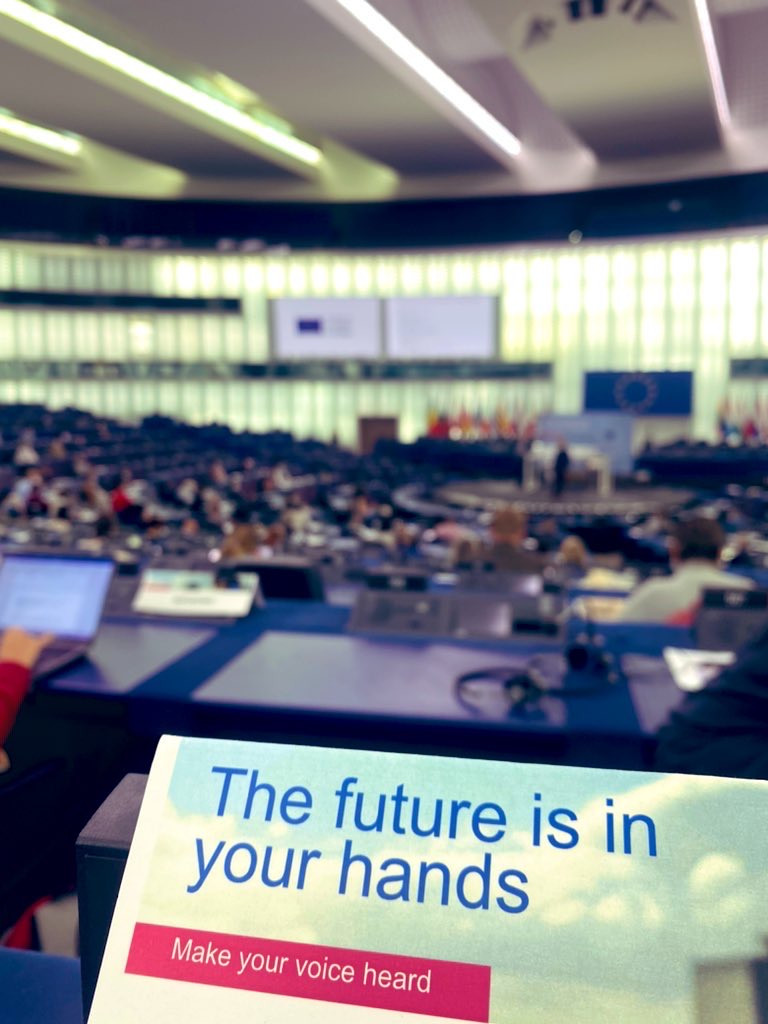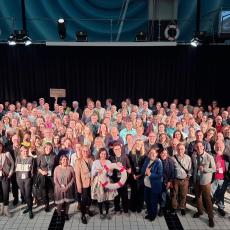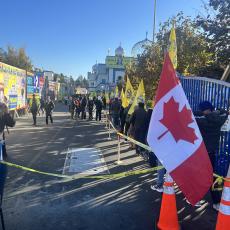In mid-September, the first stage of the European democratic experiment began: 800 randomly selected citizens, meeting across five European cities and online to draft proposals under the nine categories of the future of Europe. What is our assessment of the Conference on the Future of Europe so far?
The Conference on the Future of Europe (CoFoE) is an innovative novelty at the European level centering around randomly selected citizens’ assemblies, called the European Citizens’ Panels (ECPs). Citizens’ assemblies are very on-trend in the European democratic world at national and local level, but in the CoFoE, they are unique in that 80 of the 800 citizens are selected for the Conference Plenary, where they are invited to discuss together with European and member state politicians. See the full CoFoE structure here.
Still, as much as we greatly welcome the EU’s initiative to involve citizens in drafting future policy proposals, the implementation of the ECPs, and more problematic, the Conference Plenary, needs to be addressed. Democracy International is leading a monitoring index together with the Citizens Take Over Europe coalition to measure the Conference on a rolling basis as well as provide proposals for improvement.
The following index figures, as well as the criteria for each, was selected and designed by considering the 10 principles for a citizens’ centered Conference and standards in accordance with a meaningful European democratic participation process. This assessment is the result of on-site observations of the Conference, including live observations witnessed by Democracy International. It serves as an interim report, where the final assessment will be published in spring 2022. On a scale of 1 (poor) to 5 (excellent) the index is as follows:
Participatory - 3
We welcome the “blank page” approach to agenda-setting in the first round of the ECPs, where participants were asked to share their long-term visions regarding a comprehensive and complex range of topics attributed to each panel, thereby setting the agenda of their own respective panel. The process of amending and modifying the subtopics and “streams” is a participatory and open process where citizens are fully invited to present feedback and concerns. Following a debate led by citizens on the proposed amendments, it is welcome that a democratic vote is held to decide which amendments are accepted and rejected. The building of the themes is considered empowering and citizens are encouraged to assert themselves.
However, this process, and the number of topics per panel, often led to a scope far too wide to be thoroughly discussed in the limited time frame of merely three weekends. For instance, Panel 1, covering economy, social justice, jobs, education, youth, culture, sport, and digital transformation risks tackling too many themes in too little time, as well as overloading the citizens assigned to the panel. Furthermore, citizens were not consulted on how to organize the process itself.
Unfortunately, the only means of participation in the Conference for non-selected citizens is via the Digital Platform. Ideas stemming from the Digital Platform are sometimes referenced in the ECPs, for instance by asking experts to react to the Digital Platform ideas. However, the Digital Platform entries are skewed, for instance by gender, where only 15% of users self-identify as female. Furthermore, the Digital Platform is not yet being fully considered in a structured way in the subgroups of the ECP.
Inclusive - 2
It is highly welcome that the ECPs use a sortition sampling technique, where 800 randomly selected citizens are selected to represent the EU’s diversity in terms of geographic origin (nationality and urban/rural), gender, age, socioeconomic background, and level of education. It makes a great effort to include youth, where one-third of the citizens are of the ages of 16-25. But except for gender and youth, data is not made available to thoroughly assess the socio-economic, ethnic, and geographical inclusiveness of the four panels.
In particular, it is highly concerning that marginalized groups are not properly represented, where thresholds should also be set for vulnerable groups, including but not limited to, people of color, non-binary gender identities, people with migrant backgrounds, EU residents, EU candidate countries, and citizens representing different EU attitudes. An extra “reach out” to these vulnerable groups who either may not be likely to be reached by traditional means is necessary in order to amplify the voices of those rarely heard in the EU. Without a truly inclusive selection of citizens, the future of Europe risks further alienating marginalized and vulnerable groups.
Deliberative - 3
Given the agenda-setting objective of the first round of ECPs, deliberative mechanisms are not yet central, which is expected to change in future sessions. The ECP subgroups so far widely vary regarding the attention paid to citizens’ speaking time, so that no individual dominates the discussions. By comparison to the Conference Plenary, decisions taken in the ECP, such as amending of the five streams and subtopics, are carried out in a deliberative, open, and democratic way.
However, it remains to be seen whether the overwhelmingly wide scope of topics discussed in the ECPs risk that there may not be sufficient time for deep or meaningful deliberation in each panel. Although a wide variety of opinions and perspectives on Europe’s future have not been expressed during the first stage, risking the creation of a purely pro-European filter bubble, citizens did express manyfold critical voices.
The facilitation within the ECP subgroups poses a twofold issue: firstly, the quality of moderation varies from each subgroup, particularly as many facilitators are carrying out multiple tasks of moderating the discussion and notetaking. Secondly, the subgroups were faced with a knowledge gap when it comes to specific and technical facts related to the topic. Since facilitators are not necessarily experts on the topic itself, discussions have steered in a direction that is not based on fact.
Open - 4
Citizens are welcomed and encouraged to speak up, to challenge each other, and to put forward their own proposals and ideas. Although the citizens were not able to set their own agenda in terms of the topic of the panels, the process of redrafting the five streams is done in an open and transparent way where citizens can amend the themes as they see fit, as long as a majority agrees.
Topics related to treaty change may be put forward and discussed, as well as be listed as a stream or subtopic.
Although independent observers are able to monitor the ECPs on site with prior authorization, there is a greater need for transparency, clarity, and streamlining of the invitation of observers.
 Accessible – 4
Accessible – 4
The livestream capability allows all interested people and civil society to follow plenary sessions of the ECPs in all official EU languages. All public documents including decided streams and subtopics are uploaded on the Digital Platform in all EU languages. The exception is the list of issue-based experts, which is often posted only on the day of the experts’ inputs. A list of the members of the Conference Plenary, including politicians at EU and national level is not publicly available, which is highly problematic in terms of democratic accessibility and transparency.
Unfortunately earlier sessions of the ECPs were not available on the homepage of the Digital Platform as EU leaders announced would be, thereby making the plenary sessions difficult to find among the various pages of the European institutions.
The subgroups are also not accessible to the general public. While having an understanding for the need for protection of discussion space and privacy in the subgroups, the transparency and accessibility to the outcomes of the subgroups could be improved by publishing the notes and outcomes of the subgroups and withholding the individual names of the citizens.
Visible – 1
The European Citizens’ Panels, and the Conference on the Future of Europe as a whole, have unfortunately received very little media visibility in the Member States, on the regional level, or in local media. There are discrepancies across Member States on the national government communication regarding the Conference.
Attractive/fun - 5
The ECPs allow a unique and special opportunity that also provide greater cultural understanding and exchanges between citizens from all corners of Europe. There is sufficient time and opportunities for social and cultural events in between sessions, including evening activities. Mechanisms are in place for citizens to express language preferences so that they can communicate with each other outside of ECP sessions on an intrapersonal level.
Effectiveness - ?
Effectiveness cannot be measured at this early stage of the Conference, but it will depend greatly on how the Conference Plenary will treat the outcomes of the ECPs and what political impact the ECPs will have on the final report of the Conference, due in spring 2022. If the Conference proves to be politically impactful, taking into account the outcomes of the citizens in an effective manner, it may outweigh the aforementioned technical, methodological, and procedural setbacks. Ultimately, if the Conference does not yield results reflective of the ECPs, and if citizens’ assemblies as a form of citizens’ participation is not here to stay as a permanent feature, then the Conference risks becoming a failed democratic experiment.


